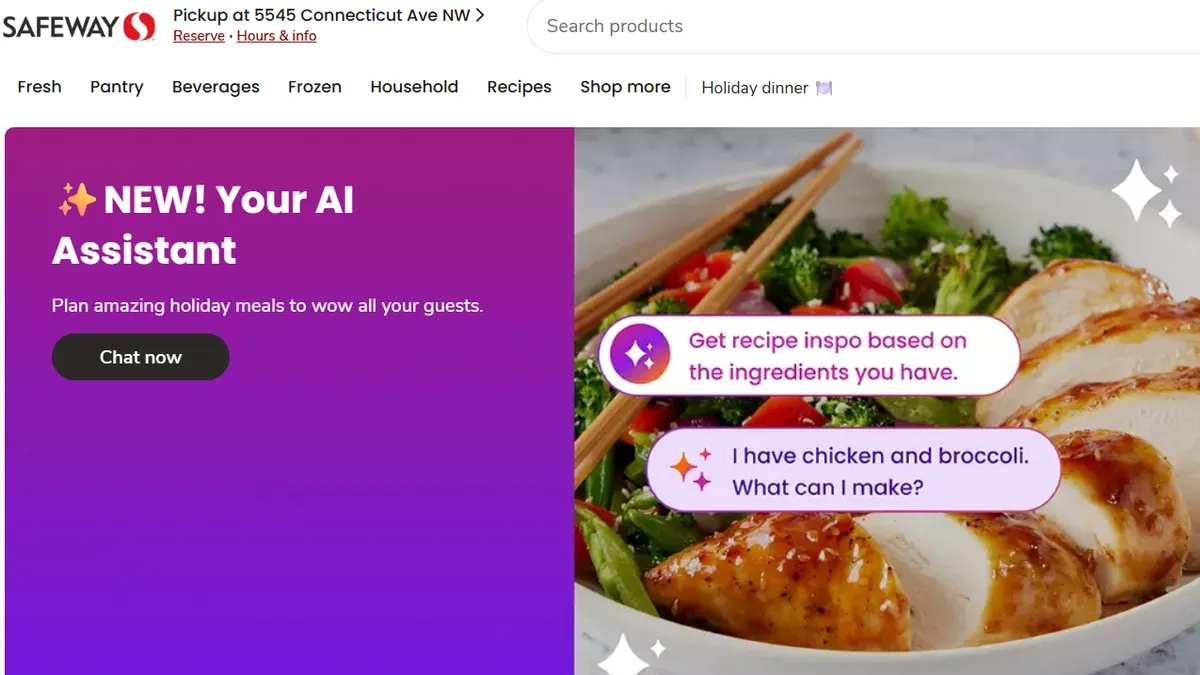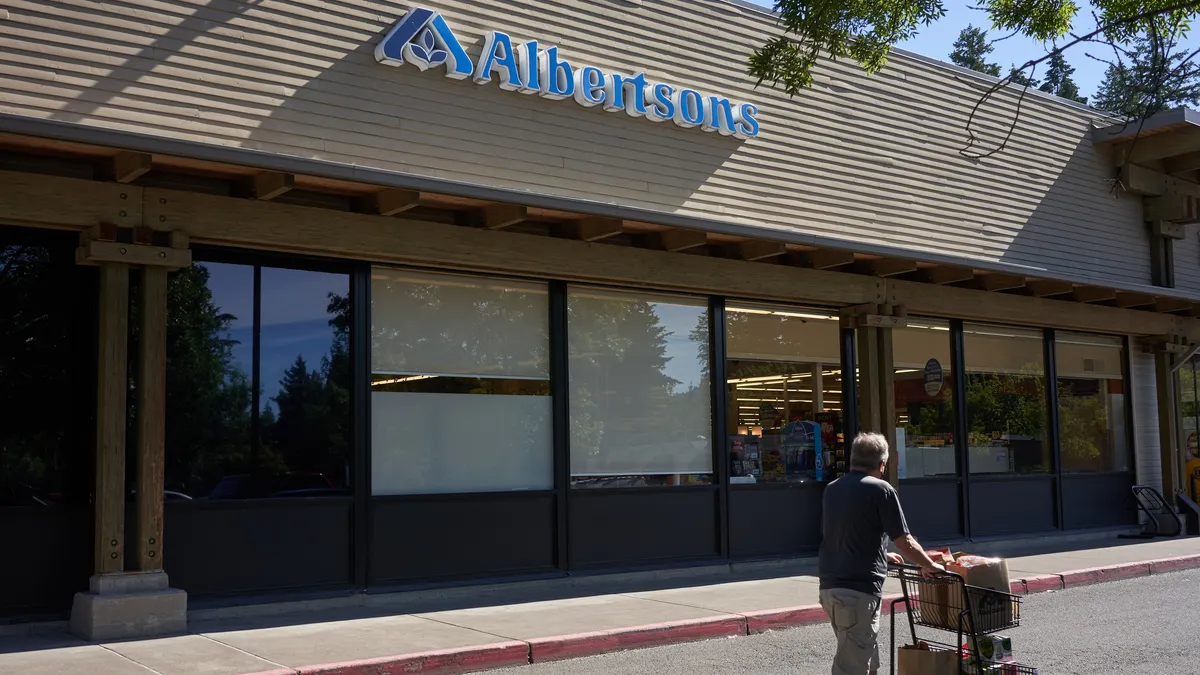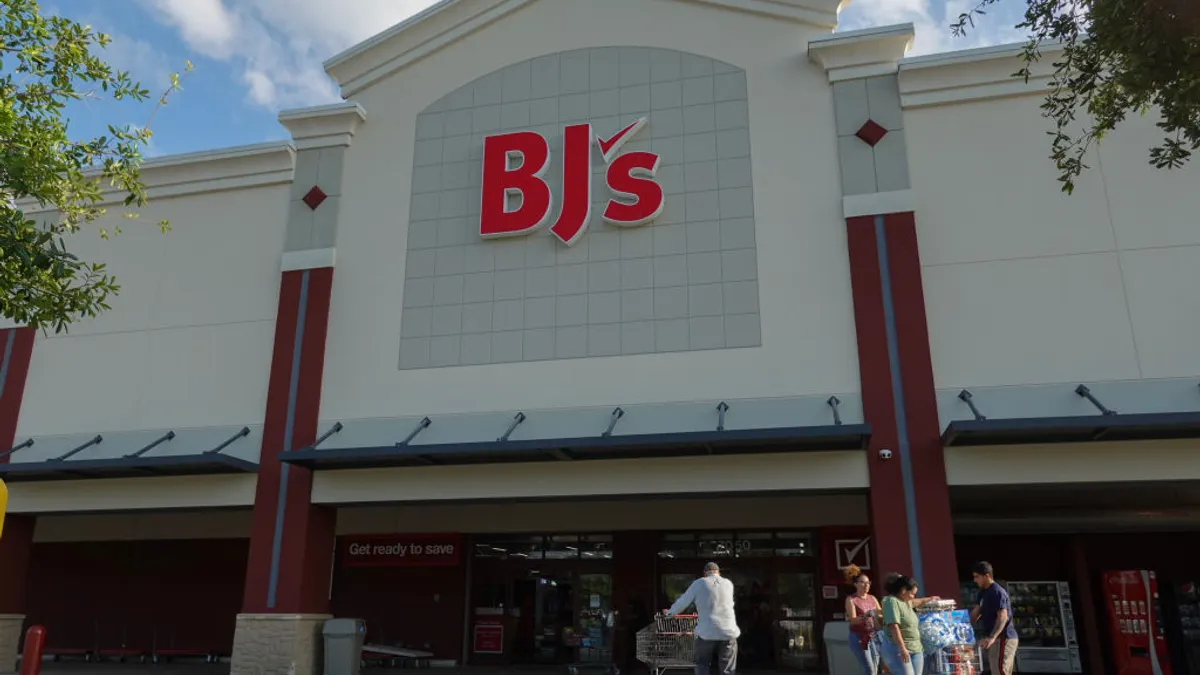As the grocery industry continues to face ongoing disruption, Dom’s Kitchen & Market is looking to stay ahead of industry changes through a focus on omnichannel shopping that prioritizes meals and leverages customer data to develop its concept.
The new Chicagoland grocery startup is helmed by Bob Mariano, who founded Mariano’s after serving as the CEO of Roundy’s and Dominick’s.
Its leadership team also includes Jay Owen, grandson of Dominick DiMatteo, who founded the now-closed Chicago-area grocery chain Dominick’s, and Don Fitzgerald, a former senior executive at Dominick’s, Roundy’s and Mariano’s.
Together, the trio is tapping into its extensive grocery industry experience and the insights of partners outside of the industry to create a meals-focused store that straddles restaurant dining and grocery shopping.
“We knew very early on this would not be Mariano’s 2.0,” Mariano said in an interview.
Dom’s is targeting having 15 stores by 2025, and the grocer’s executives say it’s on track to accomplish that. Dom’s already has two stores open — one in the Lincoln Park neighborhood and another that opened this week in Old Town. While the proposed Kroger-Albertsons is expected to shake up the Chicago grocery scene, Mariano and Owen said that deal is not impacting their strategy for opening future stores.
Mariano and Owen, co-founder and chairman at Dom's, shared in an interview how Dom’s is developing its concept and looking to stay ahead of industry trends.
Emphasis on experiential shopping
Owen and Mariano teamed up shortly after Amazon purchased Whole Foods in 2017. That acquisition spurred industry commentary that brick-and-mortar grocery stores would become the next victim of e-commerce’s growing presence, Owen said.
Dom's founders, though, saw that acquisition as a sign that brick-and-mortar wasn't going away, but that customer behavior would evolve around how they choose to shop in-person and online, Owen said, noting a bifurcation between “chore” shopping of household staples and of meal-based shopping. Dom’s founders expect the purchasing of center store items that people tend to repeatedly buy the same brands of to move online.
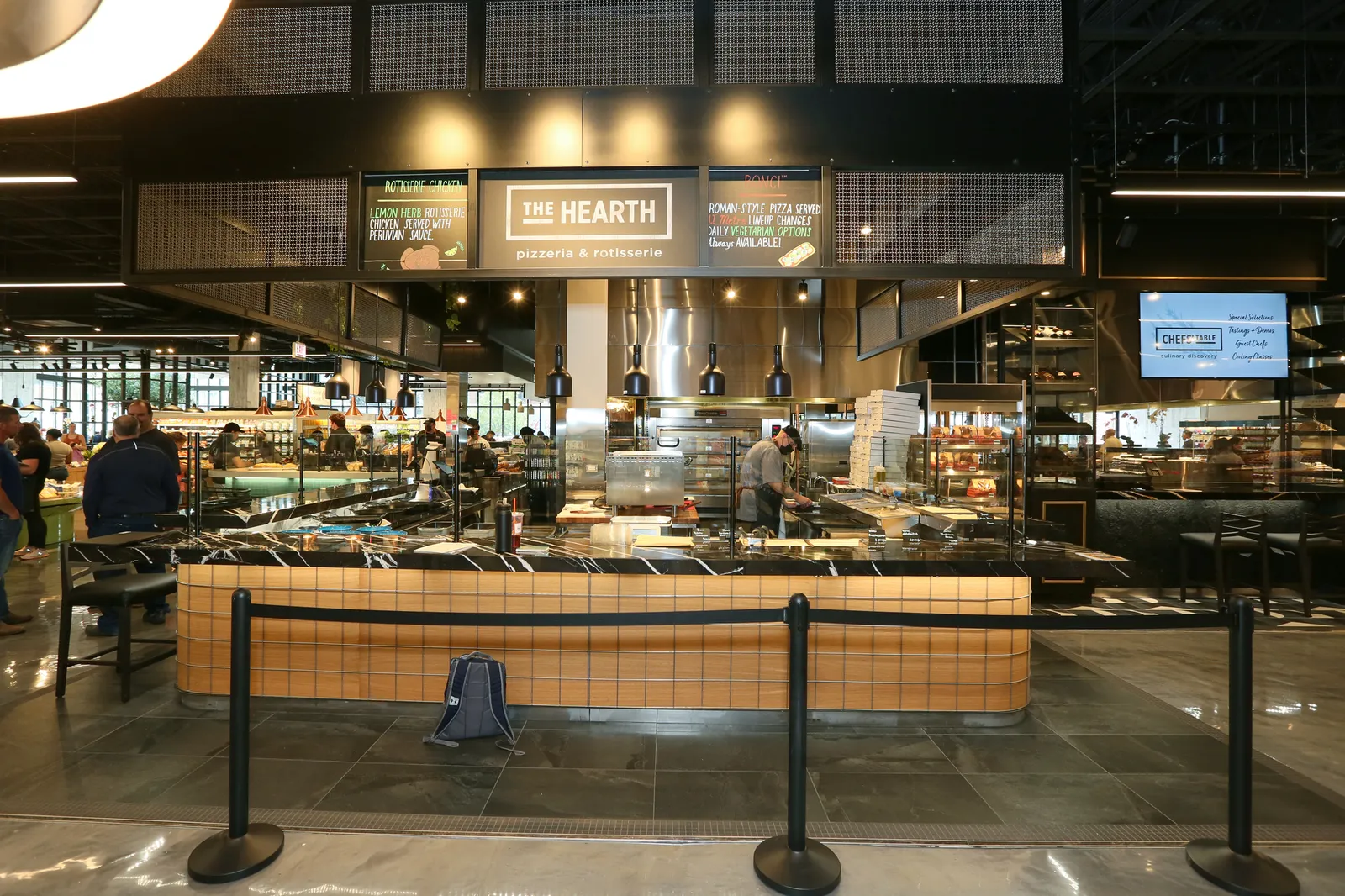
“What you had left was the meal-based part of the shop: What am I having for dinner tonight? And in our estimation, that’s really where the store was going to move towards,” Owen said.
Dom's pursuit of the meals-based shop has led the fledging chain to lean heavily into a variety of meal solutions, from grab-and-go to made-to-order to selling individual ingredients for people to cook at home.
“This is as much a restaurant as it is a grocery store,” Owen said.
Dom’s has partnered with Chicago restaurateur Brendan Sodikoff, who is known for creating the cafes in Restoration Hardware locations, to help fashion its meal offerings.
As a result, Dom’s is creating smaller and more experiential stores than traditional grocers, with the aim of serving as places of discovery and inspiration around what people eat.
While some large retailers are turning to ghost kitchens as a meal solution for in-store shoppers, Owen and Mariano stressed the importance of authenticity and “food theater” that in-store kitchens that let customers watch their food getting made not only provides an element of “food theater” but also provide a level of authenticity.
“I don’t think long-term that’s going to be as successful if you don’t have a station out front,” Mariano said about dark kitchens.
Tapping into a range of expertise
Dom’s is embracing a mix of veteran supermarket industry expertise and new perspectives, including hires outside of the food and grocery sectors.
Many of the stores’ team members hail from the hospitality industry, while the corporate team also includes employees from hospitality and other industries outside of grocery, Owen said. James Klewin, executive chef and director of culinary at Dom’s, for example, most recently worked as regional executive chef for HMSHost at Chicago’s O’Hare International Airport.
“They bring a sense of perspective from other industries that we think is really valuable as we build out our culture and our team,” Owen said.
Customer data is key
Retailers in the grocery industry have struggled to incorporate data into their operations, Mariano said
Dom’s is being very intentional about utilizing data from its loyalty program to help guide the company’s development and the shopper journey, Owen and Mariano noted. While the grocery chain is still in the process of figuring out how to weave that data into its operations, Mariano said his philosophy is that grocers need to use a mix of their merchants’ expertise with customer data for the sweet spot of decision making: “You want to trust your instincts but verify with the data.”
Dom’s loyalty program has three tiers based on their monthly spending. The “Foodie” level is free to join. At “Sous Chef,” for people who spend $50/month, members get a free 12 oz. drip coffee and $1 off specialty drinks from The Brew every day. “Master Chef,” the highest tier for those who spend $150 or more per month, unlocks a free daily cafe drink for the current month and the next one.
Since the opening of its first store in Lincoln Park, Dom’s has had almost 20,000 people sign up for its loyalty program, Owen said.
Dom’s has taken its cue from loyalty programs developed in the restaurant and airline industries, Owen said.
“What doesn’t exist is [loyalty programs] that have brought both the restaurant side and the grocery side together. And I think that’s actually the power of the learning that we have here,” he said, noting this approach will give Dom’s a deeper understanding of customer behavior and preferences.
For a customer who used their loyalty card to buy a precooked salmon dinner, for example, Dom’s can then serve up ads for that customer to get pre-cooked salmon from the seafood department or inspire them with other meal solutions using data on what a customer’s dinner preferences are, Owen said.
“We’re fortunate that we’re small. It doesn’t take long to be inundated with data,” Mariano said.
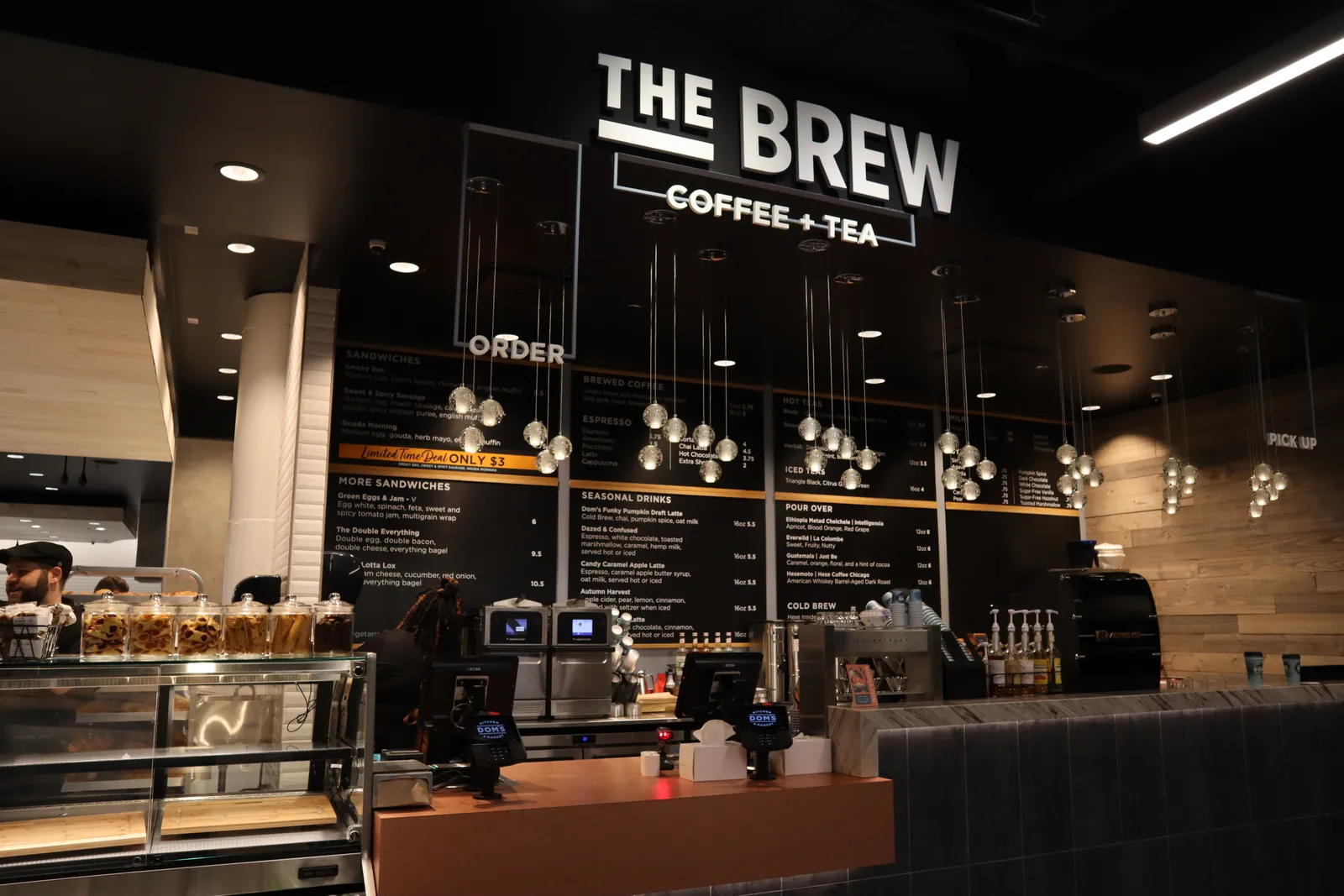
The future is omnichannel
While Dom’s has focused on opening stores to draw customers in, the grocery startup is placing “a lot” of emphasis on e-commerce, Owen said.
Dom’s, like many other grocers, started off by relying on third-party online marketplaces — Instacart, DoorDash and Uber Eats — to stand up its online operations, Owen said, noting Dom’s has always had its own store associates pick and pack online orders.
Dom’s used those partnerships to learn more about how e-commerce operates and took those lessons to develop its own e-commerce platform called Dom’s Go, which launched a few weeks ago, Owen said. Online sales from Dom’s Go already account for roughly 5% of Dom’s total sales, he noted.
Now, Dom’s is in the process of migrating its customers from the marketplaces over to its in-house service.
Mariano noted that online shoppers get a personalized thank you note with their online orders — one of the “little touches” the grocer has added to make its experience unique.
The future of grocery shopping is omnichannel in the minds of Dom’s founders: “It’s not simply an e-commerce customer and it’s not simply a brick-and mortar-customer. It’s people who are going to move between one and the other,” Owen said. Creating a consistent experience across offline and online shopping is key, Owen said, adding that owning the e-commerce service gives Dom’s more control over that experience, as well as more access to customer data.
For shoppers, there aren’t any inconsistencies with product offerings now between in-person and online: “What you see in the store is exactly what you see on our Dom’s Go app,” Owen said.
Embracing experimentation
As Dom’s continues to grow its Chicagoland store fleet, Owen and Mariano stressed the grocery chain is quickly learning and innovating along the way.
Store size is one area that Dom’s is playing around with. The Lincoln Park store is 18,000 square feet and the Old Town store is 27,000 square feet. Mariano noted Dom’s is looking to keep future stores around that size range as it figures out how small it can make its locations.
“We’ve got a tight little format,” Mariano said, but noted that the grocer is still working to determine its ideal store size.
As big box retailers like Walmart and Target have grown their grocery aisles, Mariano noted that the smaller formats of Dom’s make it more pleasant for customers to walk and shop.
Experimentation is already evident when comparing the two stores that have opened so far. The shopper journey from the produce aisle to the checkout area, for example, runs clockwise in the Old Town store and counter-clockwise in the Lincoln Park one. While the first store has a dual-purpose coffee and wine bar, the new store split them into two stations due to their popularity.
“We’re a big believer in test and learn” in developing the business, Mariano said.








